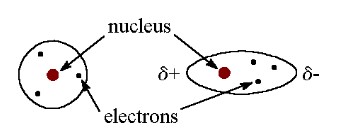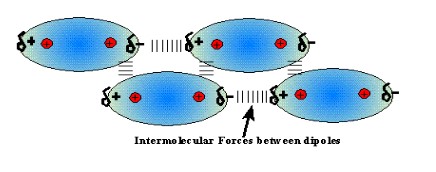Molecular Polarity and Intermolecular Forces
1/7
Earn XP
Description and Tags
Name | Mastery | Learn | Test | Matching | Spaced |
|---|
No study sessions yet.
8 Terms
electronegativity
the ability of an atom to attract a shared electrons within a covalent bond
nonpolar covalent bonding
llectrons are shared equally → atoms have same electronegativity

polar covalent bonding
electrons are shared unequally → atoms have different electronegativities → electrons attracted more closely to atoms with the higher electronegativity

ionic bonding
electrons transferred

bond polarity
the distribution of electric charge across a chemical bond between two atoms
Van Der Waals forces
attraction between temporary dipoles
exists in all molecules both polar and non-polar
caused by the electrons of one molecule being attracted to the nucleus of another molecule; forming temporary (instantaneous) induced dipoles.
the more electrons a molecule has (from larger atoms / bigger atoms), the stronger its VDW forces because there is a more prominent temporary dipole

dipole-dipole forces
attraction between permanent dipoles
occurs in all polar molecules
caused by the attraction of the partial positive end (δ+) of one molecule to the partial negative end (δ-) of another molecule, and vice-versa

hydrogen bonding
attraction between permanent dipoles: F-H, O-H, N-H (FON)
special type of dipole-dipole force that is very strong
caused by the attraction of hydrogen atoms bonded to F, O, N (high EN) in one molecule to the lone pair of electrons on the F, O, N atom of another molecule
